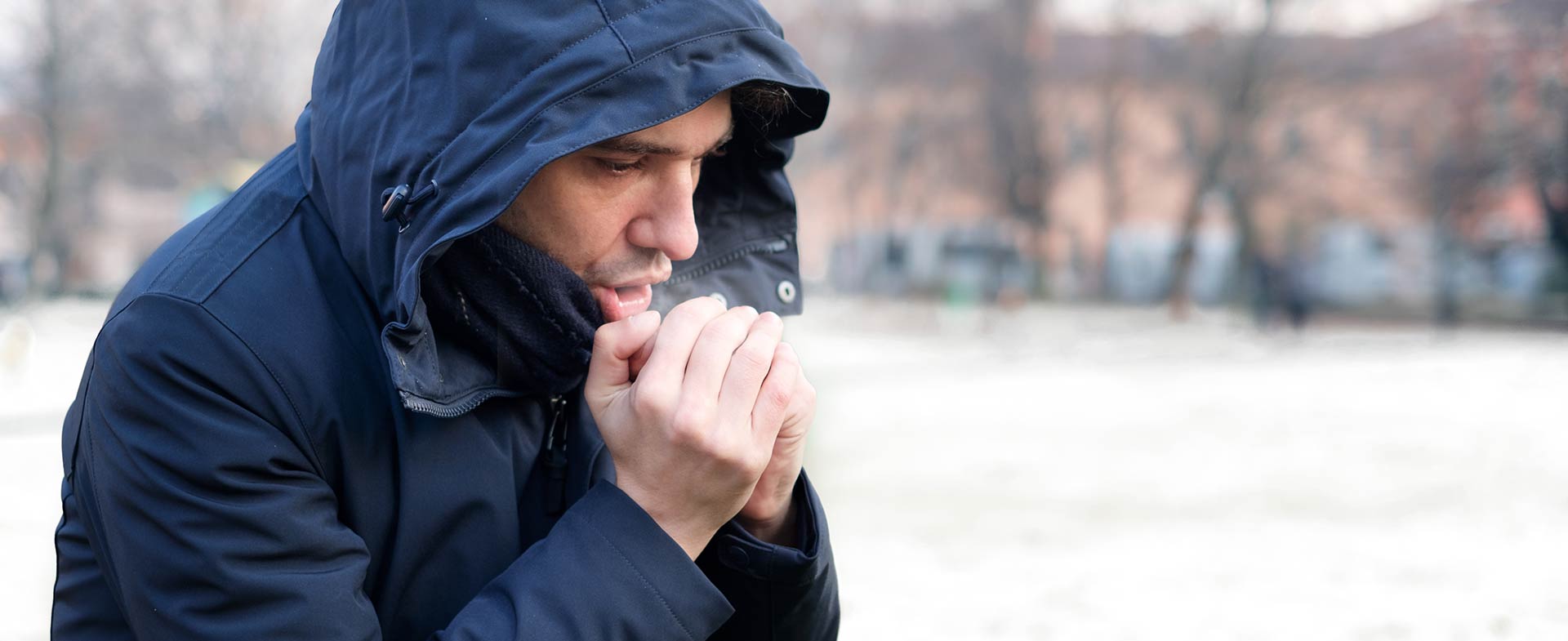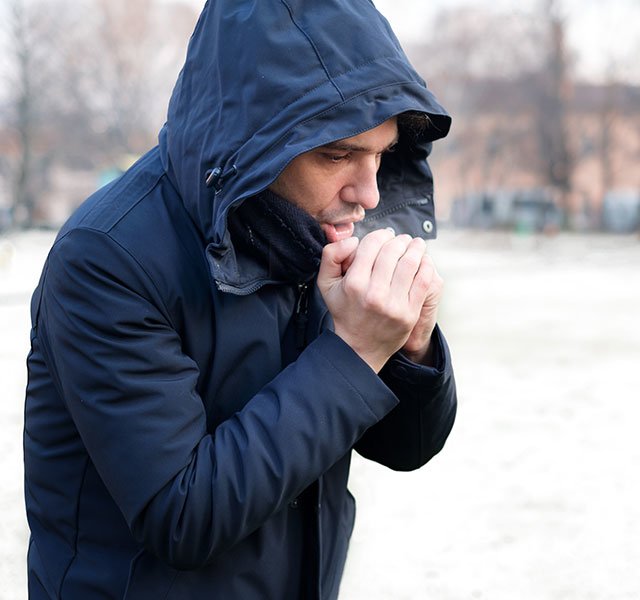Winter can be challenging for the 1 in 10 people affected by Raynaud’s disease (or Raynaud syndrome). This condition causes color changes, numbness and pain in the fingers and toes after exposure to cold. For some people, stress can also trigger these symptoms.
“The good news is that most people with this disease can manage symptoms without medication. Preventive steps can often reduce the frequency and duration of episodes,” says Olusegun Osinbowale, M.D., a vascular medicine specialist at Henry Ford Health.
Here Dr. Osinbowale explains the distinct types of Raynaud’s disease, and how these conditions are diagnosed and treated.
Three Types Of Raynaud’s Disease
Raynaud’s disease happens when small arteries in the hands and feet narrow in response to cold or stress. These episodes, called vasospasms, limit blood flow and cause fingers and toes to turn white or blue. Unless people with Raynaud’s disease rewarm their hands and feet, they may also feel numbness, “pins and needles,” or pain.
While these changes are similar to symptoms of frostbite, the two conditions have different causes. Raynaud’s disease is caused by vascular changes. Frostbite occurs when skin cells freeze on bare skin exposed to temperatures below freezing.
The three types of Raynaud’s disease vary in severity:
- Raynaud’s phenomenon: With this condition, people experience sporadic episodes of vasospasms, with symptoms lasting 5 minutes or less. For example, someone may experience brief color changes or discomfort in their fingers when taking food from the freezer or going outside on a chilly day.
- Primary Raynaud’s disease: People with primary Raynaud’s disease have vasospasms throughout the year. Symptoms can last up to 15 minutes and usually appear on both sides of the body.
- Secondary Raynaud’s disease: This rare form of the disease can cause longer vasospasm episodes year-round. It may cause more symptoms or more severe symptoms on one side of the body or one part of the extremities. People affected by this type of Raynaud’s have other underlying conditions, including connective tissue disorders, autoimmune disorders, hematological diseases and vascular diseases. People who smoke or have hypertension, diabetes or atherosclerosis are also at greater risk for secondary Raynaud’s disease. Because more women have autoimmune diseases like lupus, they are also at greater risk for developing secondary Raynaud’s disease.
How Is Raynaud’s Disease Diagnosed?
To diagnose Raynaud’s disease, your doctor will:
- Ask about your health history and whether you have a family history of Raynaud’s disease or other conditions linked to the disease
- Discuss your symptoms, including what triggers them, how long they last and how often they occur
- Do a physical exam to evaluate the skin, nails and blood flow in your hands and feet
Your doctor will also review your current medications. Some medications can trigger Raynaud’s attacks, including:
- Attention deficit hyperactivity disorder (ADHD) medications
- Birth control pills with estrogen
- Blood pressure medications
- Certain cancer therapies
- Migraine medications
- Over-the-counter cold or allergy medications
If you have severe symptoms, your physician may do additional tests. For example, a vascular ultrasound uses sound waves to generate an image of the blood flow within your extremities. Blood tests can also identify whether you have an underlying condition, such as an inflammatory or autoimmune disease.
How Is Raynaud’s Disease Treated?
For people with Raynaud’s phenomenon or primary Raynaud’s disease, preventive measures can often reduce and manage symptoms. Dr. Osinbowale recommends these steps:
- Lifestyle changes: Limit caffeine and stop smoking. Both caffeine and nicotine can constrict blood vessels and worsen Raynaud’s symptoms. Manage your overall health by maintaining a healthy weight, exercising regularly and having a good sleep routine. These steps reduce your risk of developing diabetes, high blood pressure (hypertension) and heart disease, which are all conditions that can worsen Raynaud’s symptoms.
- Make a plan: If cold temperatures trigger your symptoms, bundle up with gloves, hats, warm socks and boots before going outside. This strategy can also reduce your risk of developing frostbite and hypothermia. Wear gloves when taking food from the freezer. Set air conditioning at a comfortable level so you don’t get too cold indoors.
- Manage stress: When you face extreme stress, your body may react with a “fight or flight” reaction. In these situations, your heart rate increases, drawing blood flow to the center of your body and away from your hands and feet. Talk with your doctor about strategies to manage stress, including how a stress tracker may help you control your emotions.
- Protect hands and feet: You can also reduce discomfort by protecting your hands and feet from bruises, cuts and other injuries. Wear shoes that fit properly. Use lotion to prevent skin from becoming dry and cracked. Wear gloves when gardening, cleaning or working on outdoor projects.
- Rewarm quickly: To stop an attack, warm yourself, including your hands and feet. Running your hands and feet under warm water can restore blood flow quickly. Avoid using hot water, which can cause burns if your fingers or toes are numb. Massage can also help relieve symptoms.
For people with secondary Raynaud’s disease, medications can help manage longer-lasting symptoms that interfere with daily life. These medications may include calcium-channel blockers and vasodilators, which relax and open blood vessels to reduce the severity and frequency of episodes.
Nerve surgery or chemical injections with local anesthetics or botulinum toxin (Botox) may also be options for people with severe symptoms. Chemical injections block the sympathetic nerves that control the opening and narrowing of blood vessels in the hands and feet. With nerve microsurgery, a small incision is made to cut these nerves to prevent their exaggerated response to triggers.
“Raynaud’s disease is typically not limb- or life-threatening. But it’s important to seek medical care before your symptoms progress. Your doctor can help you manage it so you can still enjoy daily activities,” says Dr. Osinbowale.
Subscribe today to receive weekly emails of our latest tips.
To find a doctor at Henry Ford, visit henryford.com or call 1-800-436-7936.
Dr. Olusegun Osinbowale is a vascular medicine specialist who sees patients at Henry Ford Medical Centers in Detroit, Brownstown, Sterling Heights and Bloomfield Township.



